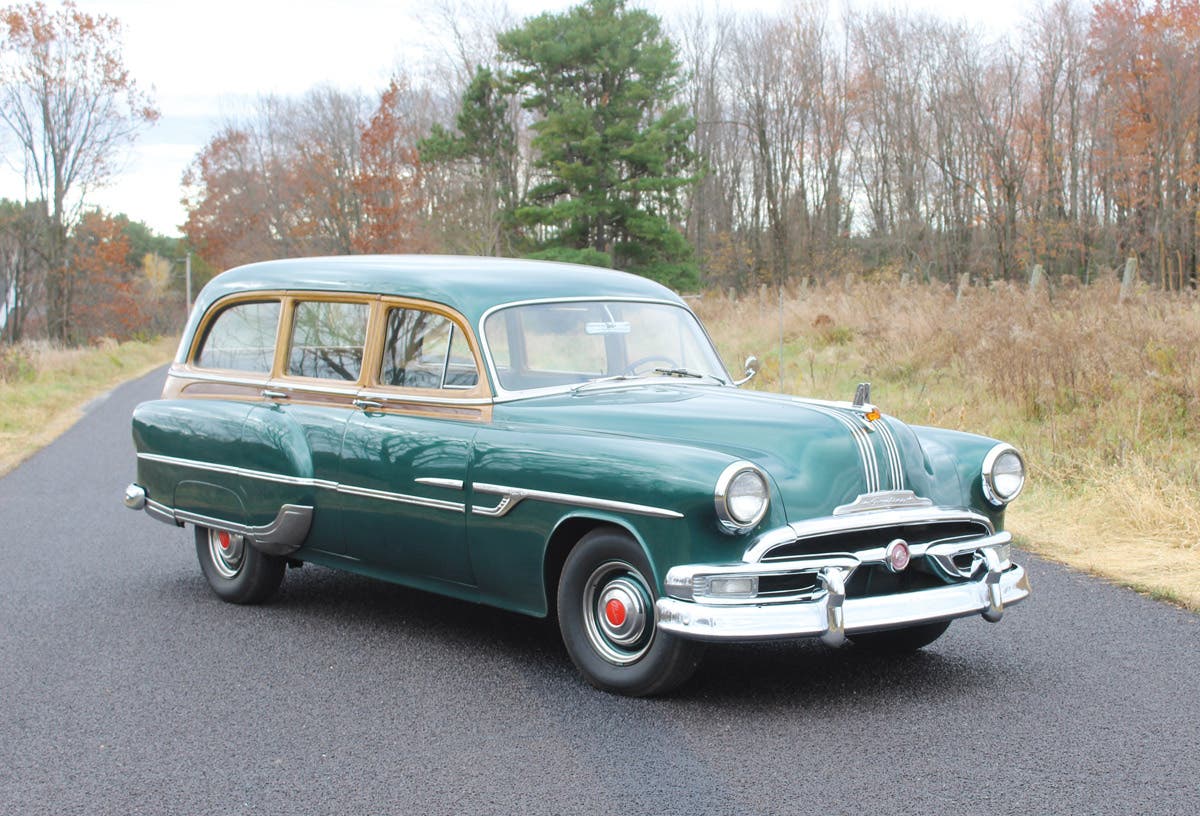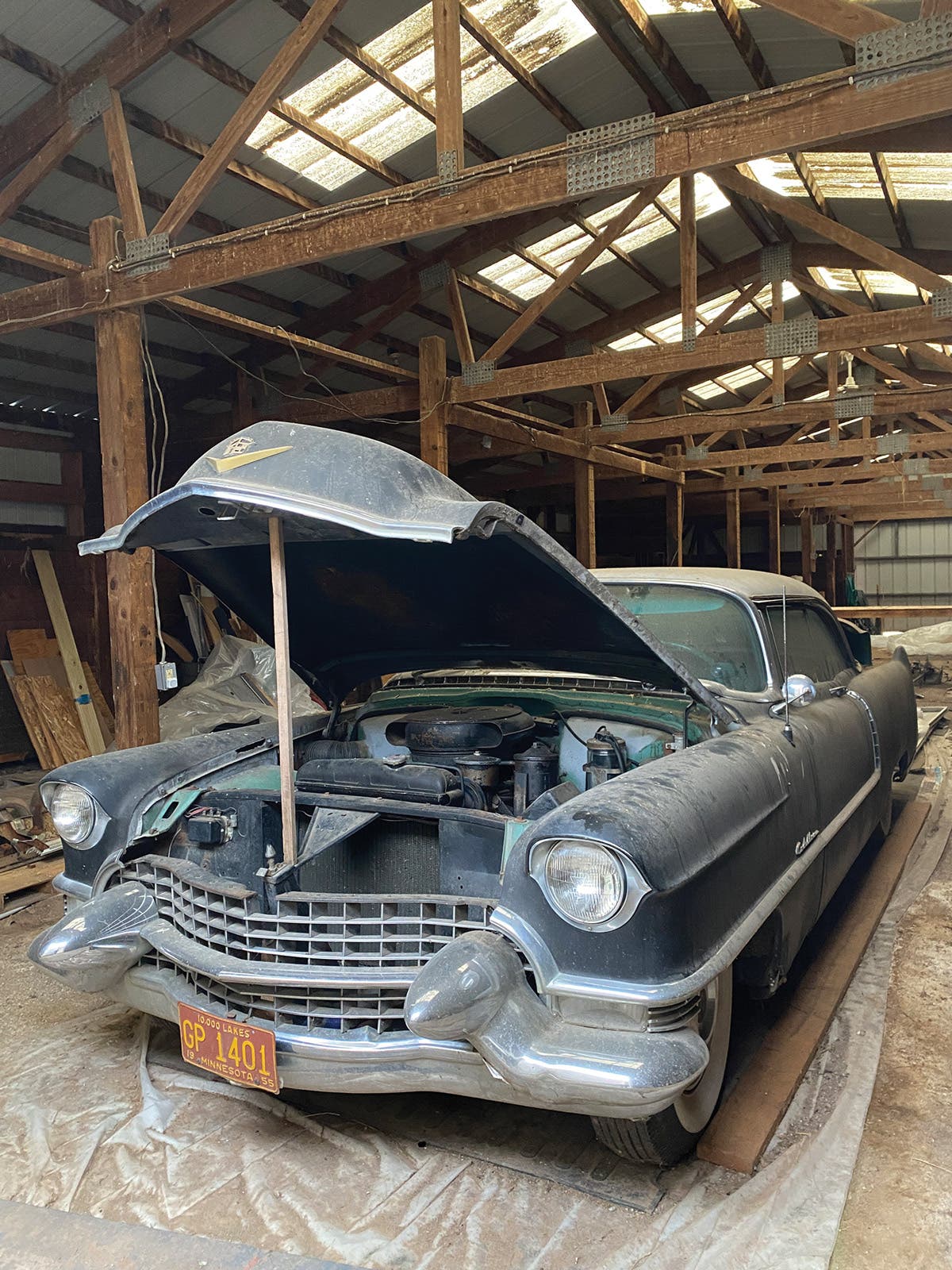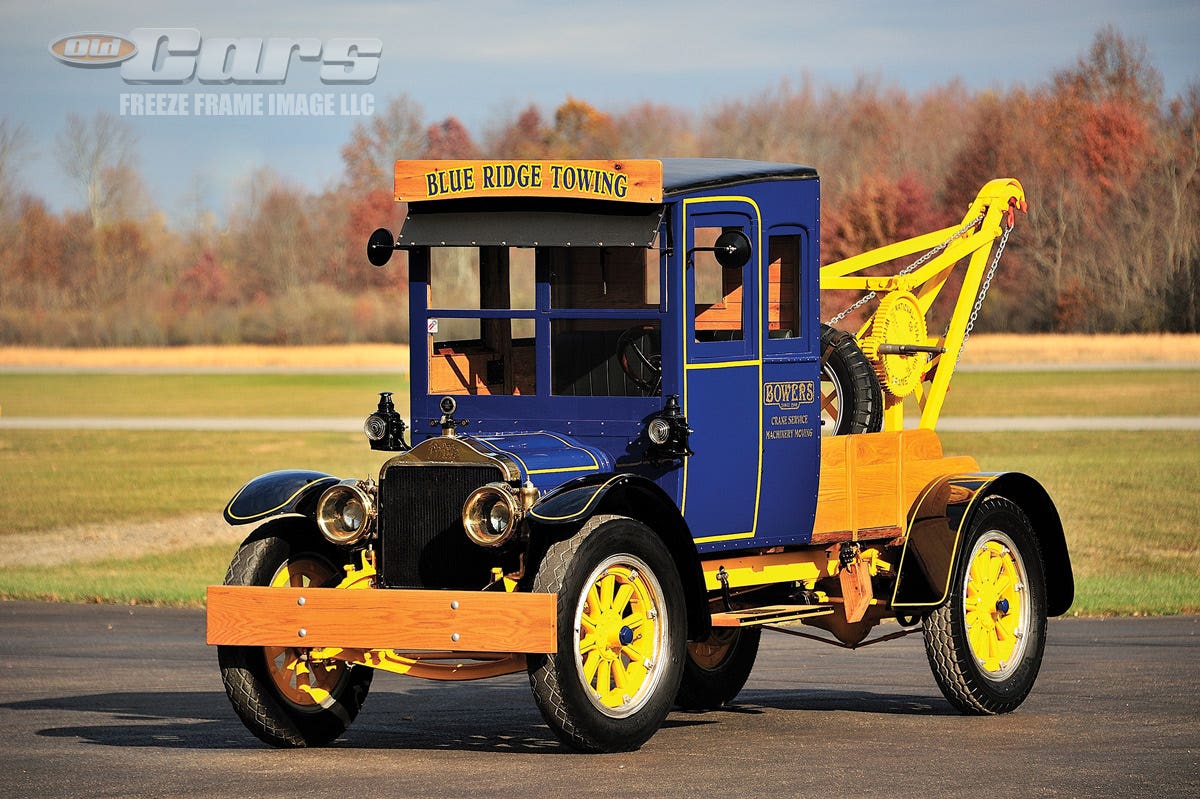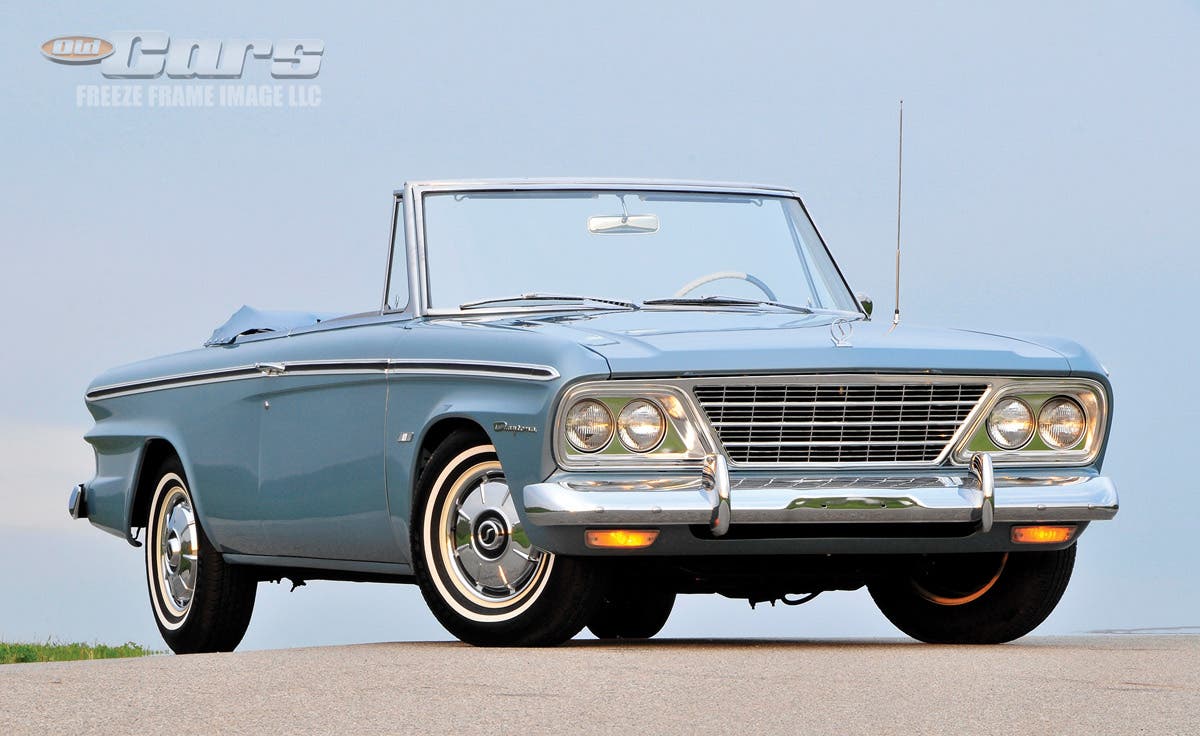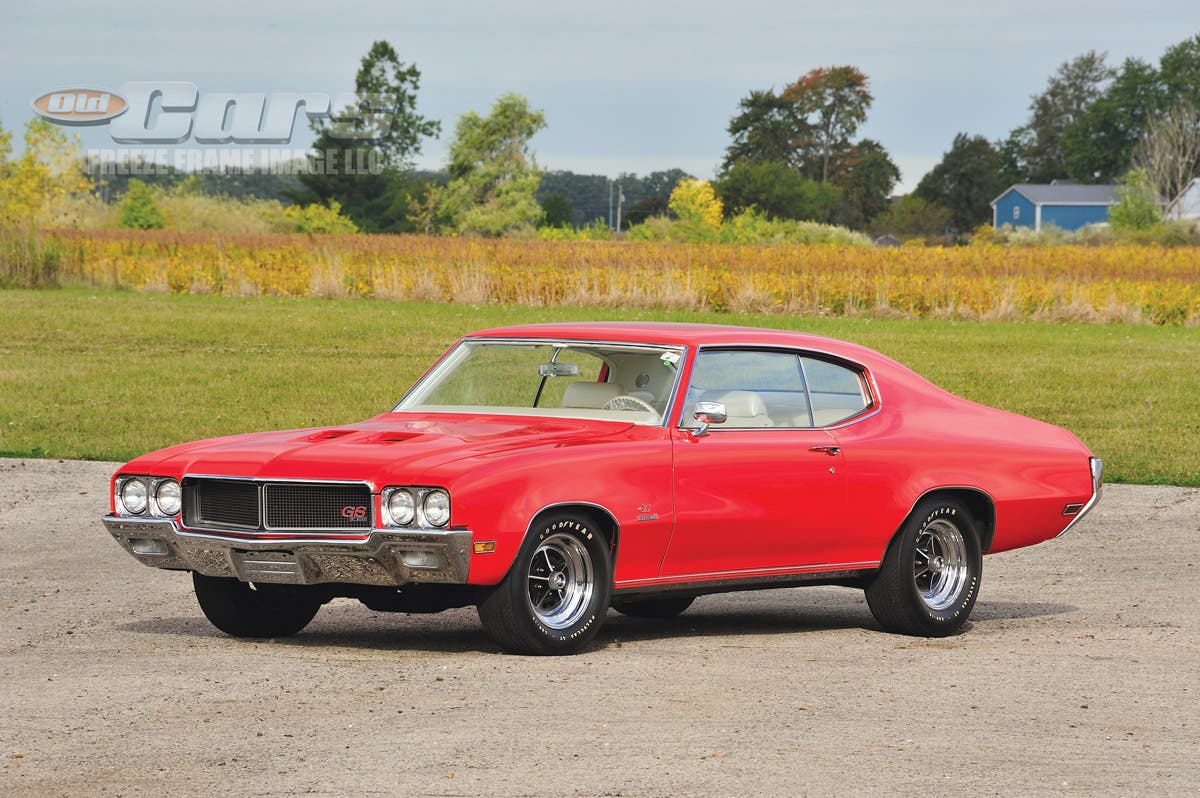Car of the Week: 1957 Pontiac Bonneville (V-8)
Pontiac accomplished a lot when it unveiled the new fuel-injected Bonneville for 1957. Not only did the company have itself a beautiful luxury cruiser that could blast down the highway at 130 mph, but it managed to completely change how the car-buying public perceived the Pontiac nameplate.
Pontiac’s entry into the modern V-8 era in 1955 was overshadowed by the media focus upon Chevrolet’s new Turbofire V-8. Both marques had previously produced V-8 engines — Chevy in 1917, Pontiac in 1932 — but those efforts belonged in the distant past. In the mid-‘50s, Chevrolet and Pontiac shared a common interest in shedding their conservative images and the best place to start was under the hood.
The new Pontiac V-8 displaced 287.2 cubic inches and was credited with 180 hp. Pontiac moved quickly from this starting point to assert itself as a major player in the performance race. By March 1955, its V-8 was available in a power pack version equipped with a four-barrel carburetor, special intake manifold, dual exhausts and a 200-hp rating.
The following year, buoyed by a larger 316.6-cid displacement, ratings as high as 285 hp and a series of successful record runs at Bonneville by Ab Jenkins, Pontiac was clearly a power to be reckoned with among American performance cars.
For 1957, Pontiac once again increased the size of its V-8. The new displacement was 347 cid. But ranking as perhaps the final and most dramatic step away from the legacy of Pontiac’s L-head, straight-eight era was the introduction of the limited production Bonneville name for a Motorama dream can this publicity, plus images of record-smashing Pontiacs streaking across the Utah salt flats, was tailor-made as a backdrop for the new model’s introduction.
A major contributor to the Bonneville’s sleek and distinctive lines was its chrome bodyside sweep-spear, which resembled a rocket ship’s profile. Also included in the Bonneville’s styling format was an anodized aluminum rear fender segment similar to that found on the Safari station wagon, pseudo side fender louvers and tri-star spinner hubcaps. Four-ply 8.5 x 14 whitewall tires were also standard for the Bonneville.
But the most sensational elements of the Bonneville’s trim with the words “Fuel Injected” positioned on its front fenders and deck.
Chevy’s introduction of its own fuel-injected engine preceded the introduction of the Bonneville in February of 1957, but the Bonneville’s exclusive nature guaranteed it plenty of attention. The Rochester FI system used by Pontiac differed in several ways from its Chevy counterpart. The most significant distinction involved the Pontiac’s longer air pipes.
Pontiac did not release an official power rating for the Bonneville engine, which had the same 10.25:1 compression ratio as other Pontiac V-8s. Instead, Pontiac offered a rather vague statement reporting that it produced “in excess of 300 hp”. Many Pontiac historians believe that the Tri-Power (three two-barrel carburetors) engines, especially those with dealer-installed solid lifer cam, were superior performers.
However, the Bonneville’s primary attraction was not as an all-out quarter-mile terror, but rather as a luxurious high-powered highway cruiser. But results of a test by Motor Trend magazine of a pre-production Bonneville that netted a 0 to 60 mph time of 8.1 seconds plus a top speed of 130 mph indicate that the Bonneville needed no apologists for its performance.
The Bonneville’s $5,782 list price included, in addition to the fuel injection unit, a long list of standard equipment. Among these were Strata-Flight Hydra-Matic transmission, power steering, power brakes, dual exhausts, eight-way power seat, electric wipers and washers, underseat heater and defroster, deluxe Wonderbar radio, electric antenna, custom latex foam front seat cushions, oil bath air cleaner, full flow oil filer, external mirror, non-glare interior mirro, passenger side visor vanity, deluxe steering wheel, padded dash, deluxe floor carpets, parking brake warning light, back-up lights, plush lights for the trunk, ashtray, glovebox and parking light.
Only 630 Bonneville convertibles were produced for the 1957 model year. The following year, the Bonneville name was applied to a full range of top-of-the-line Pontiacs.
The result of Pontiac’s Bonneville venture? A successful revolution in how the car-buying public perceived Pontiac and the existence of a very rare, very desirable and very exciting automobile.
ENGINE
Bonneville V-8: Overhead valve. Cast-iron block. Displacement 347 cid. Bore & stroke: 3.94 x 3.56 in. Compression ratio: 10.25:1. Brake hp (estimated): 315 @ 4800 rpm. Five main bearings. Hydraulic valve lifters. Induction: Rochester mechanical fuel-injection.
COLLECTIBILITY
The "F-word" in old car hobby circles means something entirely different than the vulgarity used on the streets. Car collectors want to hear the word "fuelie" and enthusiasts of the 1957 Pontiac Bonneville hunt hard to find an authentic fuel-injected model from that seminal year in Bonneville history.
Only 630 fuelie Bonneville convertibles were released in '57 with the stipulation as being "dealer use only" models. Because demand will outstrip the number of remaining survivors (minus the replica pretenders), the current top value of $150,000-$180,000 should only increase as the collector car market gains traction in the coming months, especially come early 2010 at the January Arizona auctions.
*As an Amazon Associate, Old Cars earns from qualifying purchases.



